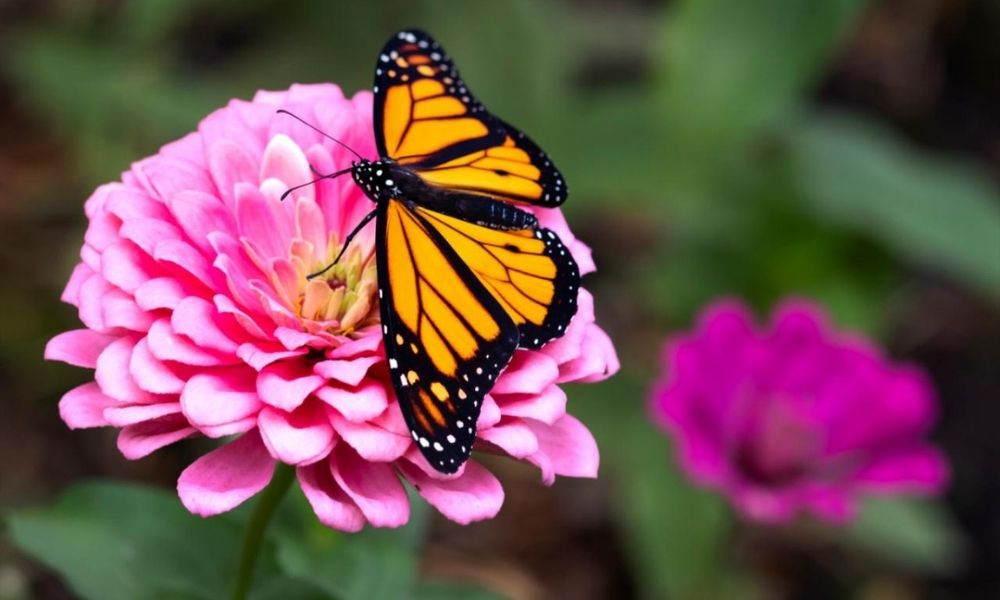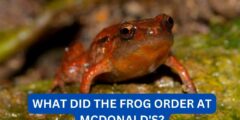Symbiosis, derived from the Greek words “syn” meaning “together” and “biosis” meaning “living”, refers to a close and long-term interaction between two different species. In this relationship, both species benefit from each other’s presence, making it a mutually beneficial association. Symbiotic relationships are found in various forms and are essential for the survival and evolution of many species. Let’s delve deeper into this fascinating world of symbiosis and explore the different types of symbiotic relationships and their significance.
Contents
The Three Types of Symbiotic Relationships
There are three main types of symbiotic relationships: mutualism, commensalism, and parasitism. Each type differs in the degree of benefit or harm one species receives from the other. Let’s take a closer look at each type and understand how they work.
Mutualism
Mutualism is a type of symbiotic relationship where both species involved benefit from the interaction. This type of relationship is often referred to as a “win-win” situation. In mutualism, both species provide something that the other needs, such as food, shelter, or protection.
A classic example of mutualism is the relationship between bees and flowers. Bees collect nectar from flowers to make honey, while in the process, they also pollinate the flowers, helping them reproduce. In return, the flowers provide the bees with a source of food. This mutually beneficial relationship is crucial for the survival of both species.
Read:What do you call cheese that isn t yours?Another example of mutualism is the relationship between certain species of birds and large mammals, such as buffaloes and zebras. These birds, known as oxpeckers, feed on the parasites found on the mammals’ skin, keeping them clean and healthy. In return, the mammals provide the birds with a source of food and a safe place to live.
Commensalism
Commensalism is a type of symbiotic relationship where one species benefits, and the other is neither harmed nor benefited. In this relationship, one species uses the other for a specific purpose, such as transportation or shelter, without causing any harm.
An example of commensalism is the relationship between cattle egrets and cattle. These birds follow cattle around and feed on the insects that are disturbed by the cattle’s movement. The cattle are not affected by the birds’ presence, making it a one-sided beneficial relationship for the birds.
Another example of commensalism is the relationship between remora fish and sharks. Remora fish attach themselves to sharks’ bodies and feed on the scraps of food left behind by the sharks. In return, the remora fish provide the sharks with a cleaning service by removing parasites from their skin. The sharks are not affected by the remora fish’s presence, making it a commensal relationship.
Read:what were the eggs under the bed?Parasitism
Parasitism is a type of symbiotic relationship where one species benefits, and the other is harmed. In this relationship, the parasite benefits by feeding on or living in the host’s body, while the host is negatively affected.
A well-known example of parasitism is the relationship between ticks and mammals. Ticks attach themselves to the host’s skin and feed on their blood, causing harm and discomfort to the host. In some cases, ticks can also transmit diseases to the host, making it a harmful relationship for the host.
Another example of parasitism is the relationship between tapeworms and humans. Tapeworms live in the human intestine and feed on the nutrients from the host’s food, causing malnutrition and other health issues. The tapeworm benefits from this relationship, while the human is harmed.
The Significance of Symbiotic Relationships
Symbiotic relationships play a crucial role in maintaining the balance and diversity of ecosystems. They are essential for the survival and evolution of many species and have a significant impact on the environment. Let’s explore the significance of symbiotic relationships in more detail.
Ecological Balance
Symbiotic relationships help maintain the balance of ecosystems by regulating the population of different species. For example, in the mutualistic relationship between bees and flowers, the bees’ pollination helps in the reproduction of flowers, ensuring a steady supply of food for other animals that depend on them. Similarly, in the parasitic relationship between ticks and mammals, the ticks’ population is kept in check by the host’s immune system, preventing an overabundance of ticks.
Read:what were the eggs under the bed?Nutrient Cycling
Symbiotic relationships also play a crucial role in nutrient cycling, which is the process of transferring nutrients between living organisms and the environment. In mutualistic relationships, one species may provide nutrients to the other, ensuring a continuous flow of nutrients in the ecosystem. For example, in the relationship between legumes and nitrogen-fixing bacteria, the bacteria convert atmospheric nitrogen into a form that can be used by plants, providing them with essential nutrients.
Protection and Defense
Symbiotic relationships also provide protection and defense to species that may be vulnerable to predators or environmental factors. In commensalistic relationships, one species may use the other for shelter or camouflage, providing them with protection from predators. For example, certain species of fish use sea anemones for protection from predators, as the anemones’ stinging tentacles deter other fish from attacking them.
Real-Life Examples of Symbiotic Relationships
Symbiotic relationships can be found in various forms and are not limited to just animals and plants. Let’s take a look at some real-life examples of symbiotic relationships that may surprise you.
Humans and Gut Bacteria
Humans have a symbiotic relationship with the bacteria that live in their gut. These bacteria help in the digestion of food, produce essential vitamins, and protect the body from harmful bacteria. In return, humans provide the bacteria with a warm and nutrient-rich environment to thrive in.
Acacia Trees and Ants
Acacia trees have a mutualistic relationship with ants. The trees provide the ants with shelter and food in the form of nectar and protein-rich structures called Beltian bodies. In return, the ants protect the trees from herbivores and other insects by attacking them with their powerful jaws.
Clownfish and Sea Anemones
Clownfish and sea anemones have a mutualistic relationship where the clownfish live among the anemones’ tentacles, providing them with protection from predators. In return, the clownfish clean the anemones by eating the algae and other debris that may accumulate on their tentacles.
The Dark Side of Symbiotic Relationships
While symbiotic relationships are mostly beneficial, there are some instances where they can have negative consequences. In some cases, one species may exploit the other for its own benefit, leading to an imbalanced relationship. Let’s take a look at some examples of the dark side of symbiotic relationships.
Brood Parasitism
Brood parasitism is a type of parasitic relationship where one species lays its eggs in the nest of another species, leaving the host to raise the offspring. This behavior is commonly seen in birds, where the parasitic bird’s eggs hatch first, and the chicks grow faster, often pushing the host’s eggs out of the nest. This behavior can have a negative impact on the host’s population, as they may have to raise more offspring than they can support.
Zombie Ants
Some species of fungi have a parasitic relationship with ants, where they infect the ants’ brains and control their behavior. The infected ants are compelled to climb to the top of a plant and attach themselves to a leaf, where the fungus can grow and release its spores. This behavior ultimately leads to the death of the ant, making it a harmful relationship for the host.
The Future of Symbiotic Relationships
Symbiotic relationships have been around for millions of years and have played a crucial role in the evolution and survival of many species. However, with the increasing human impact on the environment, these relationships are facing new challenges. Climate change, habitat destruction, and pollution are all threatening the delicate balance of symbiotic relationships.
One example of this is the relationship between coral reefs and the algae that live within them. Coral reefs provide a home for the algae, and in return, the algae provide the coral with essential nutrients. However, rising ocean temperatures and pollution are causing the algae to leave the coral, leading to coral bleaching and ultimately, the death of the coral reef.
It is essential to understand and protect these symbiotic relationships to ensure the survival of many species and maintain the balance of ecosystems. Governments, organizations, and individuals must take steps to reduce their impact on the environment and preserve these relationships for future generations.
Conclusion:
Symbiotic relationships are a fascinating aspect of the natural world, where two different species come together to form a mutually beneficial association. From mutualism to parasitism, these relationships play a crucial role in maintaining the balance and diversity of ecosystems. They provide protection, aid in nutrient cycling, and regulate the population of different species. However, with the increasing human impact on the environment, these relationships are facing new challenges. It is our responsibility to understand and protect these relationships to ensure the survival of many species and maintain the delicate balance of our planet.







